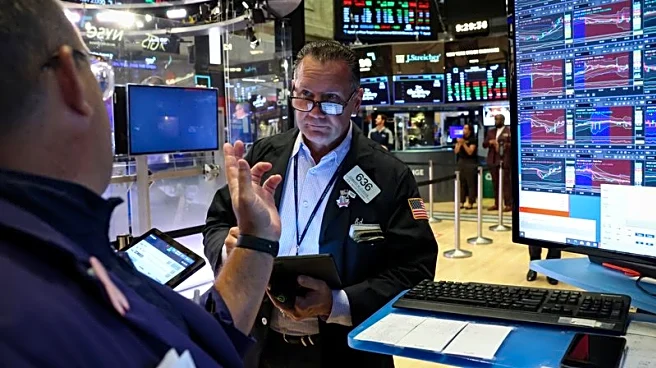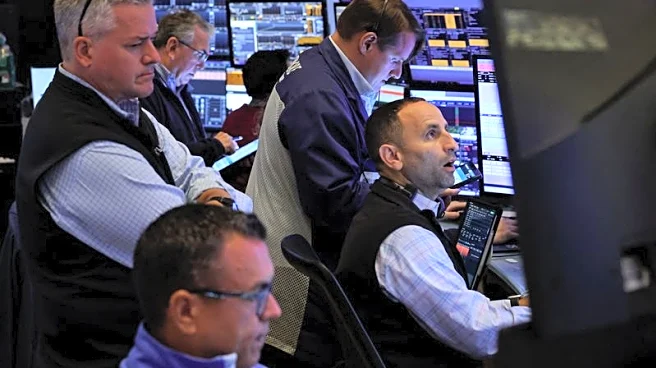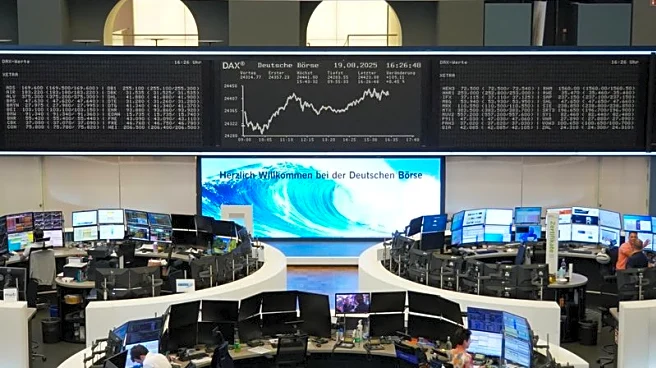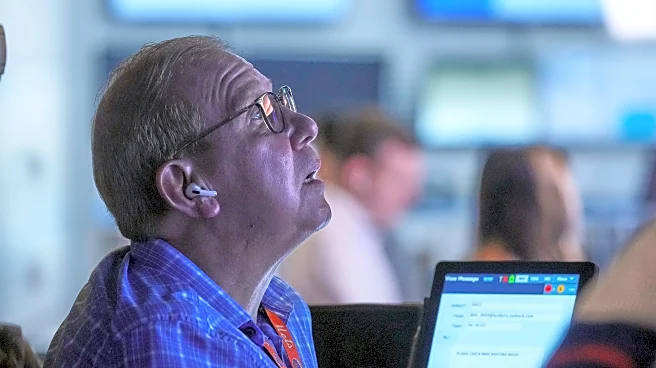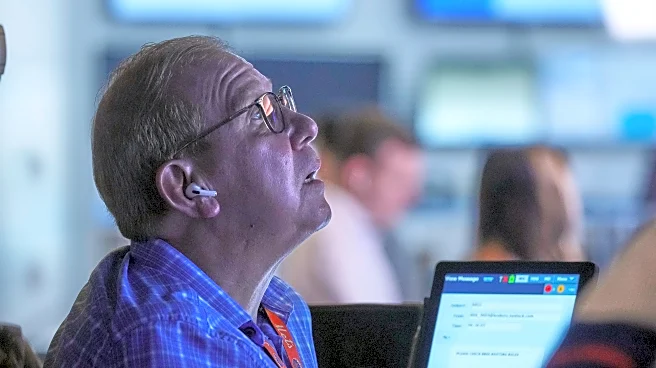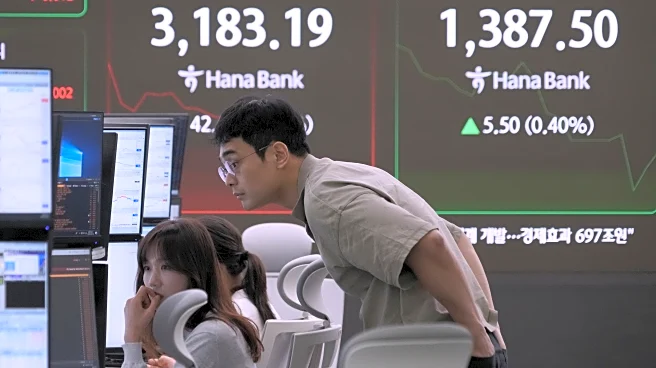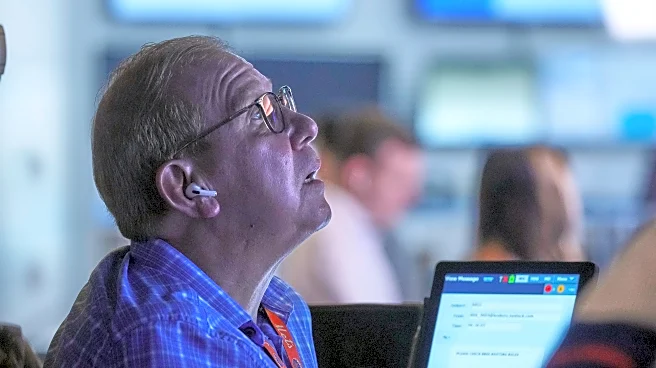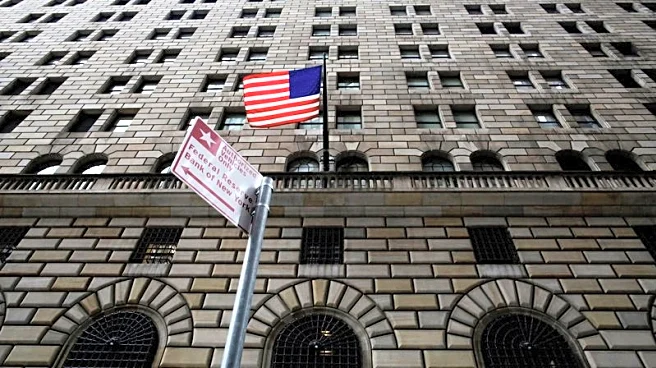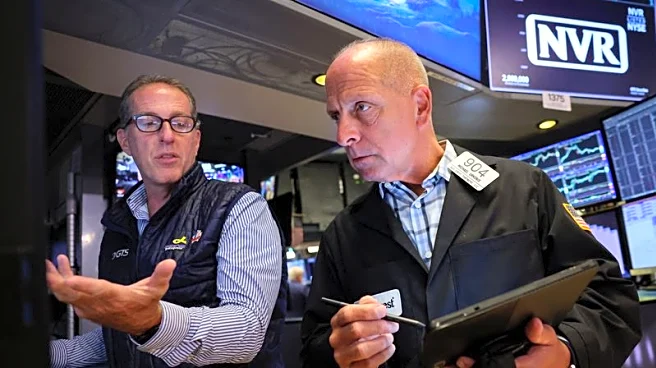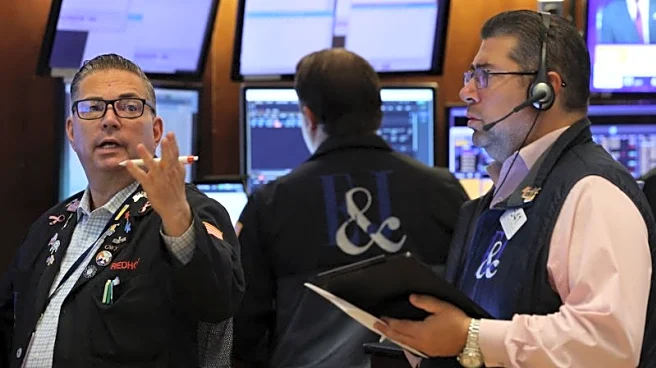By Jamie McGeever
ORLANDO, Florida (Reuters) -TRADING DAY
Making sense of the forces driving global markets
By Jamie McGeever, Markets Columnist
U.S. stocks fell on Thursday and the dollar and Treasury yields rose, as solid factory data cast a bit more doubt on the Fed's readiness to lower interest rates next month. All eyes are now firmly on Fed Chair Jerome Powell's Jackson Hole speech on Friday.
More on that below. In my column today, I look at the apparent contradiction between record inflows into
U.S. assets from abroad, and the 125 basis points of Fed rate cuts traders are expecting by the end of next year. It doesn't add up.
If you have more time to read, here are a few articles I recommend to help you make sense of what happened in markets today.
1. Fed's expansive experiment in strategy to get a rebootat Jackson Hole 2. How Fed Chair Powell has used Jackson Hole to signalwhat's next 3. What's in Trump's trade deal with Europe? 4. Washington's chip stakes look like industrial policy onoverdrive 5. The UK is back in business. Someone forgot to tellBritish investors: KlementToday's Key Market Moves
* STOCKS: Britain's FTSE 100 clocks record high for athird day, China hits 10-year high. Wall Street's main threeindices fall - S&P 500 down for a fifth day, longest losingstreak this year. * SHARES/SECTORS: U.S. consumer staples -1.2%, biggestfall in two months. Walmart -4.5%, biggest fall in six months. * FX: Dollar rises across the board. In G10 FX, it gainsmost against low-yielding Swiss francs and yen. Japan's currencyhas biggest fall this month. * BONDS: Japanese yields hit historic peaks - 10-yearhighest since 2008, 20-year since 1999. U.S. curve bearflattens, chance of Sept Fed hike now barely one-in-four. * COMMODITIES: Oil rises 1% on stalled Russia-Ukrainepeace talks, strong U.S. demand. WTI settles at $63.43/bbl.Today's Talking Points:
* Jackson Hole. Fed Chair Jerome Powell's eighth and final Jackson Hole speech is almost upon us. There may be three broad elements of his address to focus on: near-term policy signals, a new framework for the central bank, and a defense of his tenure.
All three will be dissected, debated and debunked. The most important element for investors in the near term will be whether he leans toward a rate cut next month. These will be his first public remarks since weak jobs data three weeks ago made a September rate cut a virtual certainty, according to U.S. rate futures.
Traders are no longer quite so certain, and rates futures markets are now barely attaching a one-in-four probability of a cut, the lowest since that payrolls shock three weeks ago.
* Economic resilience. There were mixed signals in Thursday's sprinkling of U.S. employment, industry and activity indicators, but perhaps the most significant was the surprise strength in the manufacturing purchasing managers' index.
The flash manufacturing PMI for July was 53.3. If confirmed by the final figure, this will be the highest in three years. Three Fed officials on Thursday signaled they are not ready to cut rates right now, and more figures like this PMI report will make the dovish case even harder to argue.
The PMI surprises were not confined to the U.S. - the latest reports from Australia, Japan, India, the euro zone and Britain show that global business activity this month was strong too.
* Trade. After a quiet few days for the global trade wars, investors got a reminder on Thursday of the brave new world ahead, as the US and European Union locked in a framework deal reached last month that includes a 15% U.S. tariff on most EU imports.
In a 3-1/2-page joint statement, the two sides listed the commitments made, and senior EU officials said they are still pressing for lower duties on wine and spirits exports. One of the most controversial elements of the deal is European companies' apparent commitment to invest $600 billion in the U.S. through 2028. Watch this space.
If America is in trouble, why do foreigners keep buying U.S. assets?
Is the U.S. economic outlook so weak that it warrants multiple interest rate cuts? Or are U.S. markets pulling in huge inflows from abroad because the country's outlook is so attractive?
Both can't be right, yet those are the respective narratives indicated by current pricing in the rates market and the latest capital flows data. Something doesn't quite add up.
Much has been written this year about how foreign investors – spooked by U.S. President Donald Trump's unorthodox, populist policies – were going to reduce their exposure to U.S. markets and deploy that capital elsewhere.
But that's not how it is panning out.
Treasury International Capital (TIC) figures last week showed that foreign investors bought a net $192 billion of U.S. securities in June. This followed a record net purchase of $326 billion in May, swelled by the largest ever inflow from the private sector.
Once U.S. investors' purchases of foreign assets are discounted, the net flow of long-term capital into U.S. securities in June was still a healthy $151 billion, taking the total for the second quarter to a record-matching $410 billion.
Zooming out a little further, net inflows in the first half of this year stood at $643 billion, on course to match the record $1.3 trillion net inflow from 2022. And in the 12 months through June, a net $1.27 trillion was poured into U.S. stocks, Treasuries, agency and corporate debt.
The end of American exceptionalism? It sure doesn't look like it.
DE-DOLLARIZATION, WHERE ART THOU?
Overseas demand for U.S. assets is clearly strong on an aggregate level. The explanation may be quite simple: capital continues to flood into the U.S. because that is where investors around the world believe they will see the strongest growth and thus earn the highest returns.
"The flows picture is remarkably robust," says Robin Brooks, senior fellow at the Brookings Institution in Washington. "I don't think you can tell a 'de-dollarization' story or 'end of U.S. exceptionalism' story from these inflows."
True, there is some justification for the de-dollarization narrative. The greenback is down 10% year to date, having recorded its worst start to a year in over half a century.
But most of that slump was in the January-April period. In the last four months, the dollar index has been essentially flat.
The dollar's weakness despite the influx of global capital certainly is a head-scratcher. Anecdotal evidence suggests this move partly reflects foreigners hedging more of their U.S. exposure, via currency options and derivatives. Short-term moves based on a dovish Fed outlook may be at play too.
ULTIMATE HEAD-SCRATCHER
But perhaps an even bigger head-scratcher is the disconnect between Fed expectations, the U.S. growth outlook, and capital flows.
Traders expect the Fed to cut rates by around 125 basis points by the end of next year. That is, by far, the most dovish expectation for any G10 central bank. History suggests easing on this scale would only occur if there were a pretty sharp slowdown in economic growth.
True, there are some red flags in the labor market, parts of 'Main Street' and U.S. public finances, even before factoring in tariff uncertainty. Yet, overall, the U.S. economy appears to be in reasonably decent shape. Economists at S&P Global Market Intelligence on Wednesday raised their 2025 and 2026 GDP growth forecasts to 1.7% and 2.4%, respectively.
Is that an economy in need of six quarter-percentage point rate cuts over the coming 16 months, or is the growth outlook relatively rosy precisely because that level of monetary loosening is expected?
That remains to be seen. For now, investors around the world continue to hoover up U.S. securities, which suggests they can't be all that pessimistic about the U.S. – or at least U.S. tech companies.
It's worth noting that the TIC data showed the large inflows in May and June were mostly in so-called riskier equities rather than 'safer' Treasuries, suggesting foreigners may be more sanguine about Corporate America than the government.
The end of U.S. exceptionalism may be around the corner, but it's a long bend.
What could move markets tomorrow?
* Japan inflation (July) * UK consumer confidence (August) * Germany GDP (Q2, detailed breakdown) * Canada retail sales (July) * U.S. Federal Reserve Chair Jerome Powell speaks at JacksonHoleWant to receive Trading Day in your inbox every weekday morning? Sign up for my newsletter here.
Opinions expressed are those of the author. They do not reflect the views of Reuters News, which, under the Trust Principles, is committed to integrity, independence, and freedom from bias.
(By Jamie McGeever; editing by Diane Craft)
